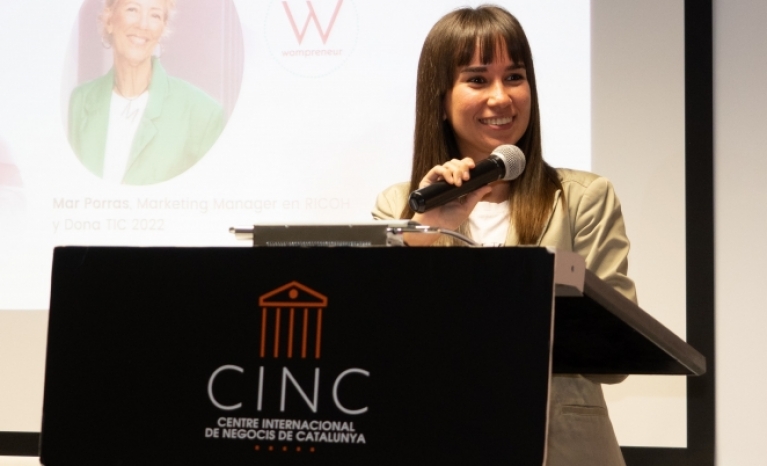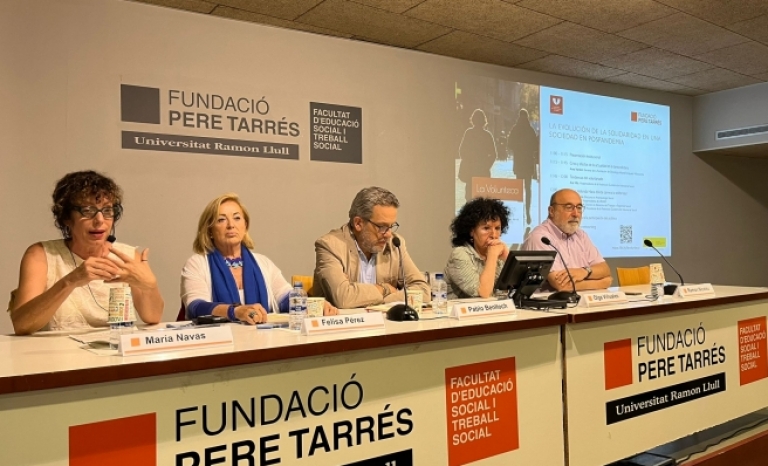The Director of Communication and Marketing of Fundació Pere Tarrés shares some tips for defining the communication strategy for organizations.
A primary, but often forgotten, aspect of any organization is communication. It is important to spend a decent amount of time thinking about your strategies, messages and goals, and try to align it with the values of the entity, putting consistency above all else.
Maria José Martínez, Director of Communication and Marketing of the Fundació Pere Tarrés, emphasizes the need for organizations to be transparent, and always define their communication according to their purpose or mission, starting from a well-founded base.
Why is communication important to third sector entities?
Communication is important for any entity, whether private or from the third sector. In this second case, conveying an attractive, positive image and clearly explaining the cause to which we owe ourselves, our mission, is essential to gain people's trust.
In fact, those entities that society has positioned at the 'top of mind' within the social and solidarity world are those that generally communicate more and/or better. And the better known (and recognized) the organization and the cause for which it works, the more likely we are that people will feel identified with it and want to collaborate with us.
Do you think it is necessary to link communication to transparency? Why? How to do it?
Communication and transparency must always go hand in hand and, in fact, we cannot conceive of one without the other. Today's audiences are demanding and something they particularly demand and value is transparent and real communication from entities. If we want to reach these audiences, if we want to make our cause relevant, it is necessary to communicate transparently. And if we think now from the side of transparency... Can we be transparent if we don't communicate?
There is no transparency if there is no communication. Communicating with transparency must be part of our DNA and not only in those communications that are required of us, such as the annual reporting, but also in all the actions and campaigns we promote, explaining honestly what we ask for and what we want to achieve . It is true that with today's oversaturation of information it is important to stand out, differentiate ourselves from the rest, be original... But this must never be at odds with transparency.
What are the keys to a communication that is both ethical and attractive?
The real key to being attractive to our donors and partners must be our purpose. For this reason, from the point of view of communication, we must be able to make this purpose reach and connect with the public. Connection is essential. There is no magic wand that tells us how to do it, this is precisely our great challenge.
We need to communicate clearly, honestly and responsibly. But, above all, we need to communicate with the soul and value our purpose. In this sense, a good way to do it is through storytelling, that is to say, using the great power of stories.
How to do a good audience analysis? Is it interesting to adapt the communication according to the different segments to which it is directed or is a comprehensive plan more appropriate?
The two things do not have to be mutually exclusive. The entity must have its own distinctive voice and well-defined global key messages. From here, of course, you need to adapt the communication to each of our main audiences of interest. To do this, you need to do a prior analysis of who these audiences are and prioritize them. When we talk about very different audiences, this prioritization is basic.
From here it is necessary to define these audiences very well both at a sociological level and also to know and keep in mind their motivations and needs. It is also especially important today to know which are the best channels to reach them in each case.
Is it important to involve the organization's team in communication?
Not that it's important, it's absolutely essential. Within an organization everything communicates, and everyone's involvement is essential. In this sense, I want to make special mention of the importance of internal communication within organizations, internal communication understood at all levels, both vertical and horizontal. And, of course, internal communication must always be two-way.
There is nothing more rewarding than seeing a committed team that participates and shares the initiatives that are carried out from their organization. There are no better ambassadors than interns.
What future perspectives do you see in communication? Which trends will continue and which will end up disappearing?
At a global level, we have been talking about a change in the way we consume information for some time now, a change that is even more pronounced when we talk about the younger generation, generation Z. The future is digital, we must be aware of it, and although we have been making this statement for years, we still have a long way to go and to adapt our strategies. In this sense, a trend that I find interesting to highlight is the trade-off between the quality and quantity of content.
I think it's important to point this out because when we talk about trends, issues such as the metaverse, artificial intelligence or automation necessarily come up and sometimes make us lose focus on the main issue, which is content. Obviously, we need to know which are the best channels and formats to communicate at any given moment and, at the moment, formats such as podcasts, short videos, 'streaming' are working very well. But formats evolve, go out of fashion, new ones emerge, while what is really relevant, what remains, is this quality content.









Add new comment